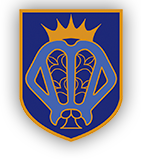Design and Technology
At Our Lady of the Rosary School, our vision is to transform the lives of our pupils within a Catholic environment by nurturing the wellbeing of each child, promoting the highest academic achievement and instilling a lifelong love of learning. We aim to fulfil our school strap line ‘Faith, Love, Learning’ by igniting a thirst for knowledge and a desire to achieve through an engaging and creative curriculum that promotes the highest academic achievements and prepares our pupils to be successful in their adult life.
Our Vision...
At Our Lady of the Rosary, we want our pupils to be ambitious and creative designers who have an understanding of the impact of Design and Technology on daily life and the wider world. Our Design and Technology curriculum will develop our pupil’s abilities in a range of designing and making products. We aim to encourage our pupils to consider the effectiveness of their designs and requirements for the design brief. To achieve this, we provide every child with the opportunity to extend their learning, experience and application throughout each unit of the Design and Technology curriculum.
As a school, we share and celebrate our Design Technology work with pride and express that every child is an Our Lady of the Rosary Designer.
Intent
At Our Lady of the Rosary School, the Design Technology curriculum is structured to be inspiring, practical and creative. We have a spiral curriculum where key concepts and strands are taught and revisited year on year. In Design Technology, our four strands are: structures, mechanisms, textiles and food technology. Pupils are taught key concepts through the strands and pupils are encouraged to use prior knowledge and make links.
We want our pupils to use their creativity and imagination to design and make products that solve real and relevant problems. Pupils will have access to a range of tools to in order to meet their design brief. They will be able to evaluate their own products against a design criteria.
Our pupils will be taught a range of subject specific vocabulary, which will revisited and built upon year on year.
EYFS
During the EYFS, pupils explore and use a variety of media and materials through a combination of child initiated and adult directed activities through the ELG of Expressive arts and Design with Materials. They have the opportunities to learn to: Safely use and explore a variety of materials, tools and techniques, experimenting with colour, design, texture, form, and function and share their creations, explaining the process they have used;
Key Stage 1
By the end of Key Stage 1 pupils will have engaged in a variety of creative and practical activities and be taught the knowledge, understanding and skills needed to engage in the process of designing and making a product in a range of contexts.
Key Stage 2
By the end of Key Stage 2 pupils will have experienced a range of creative and practical activities. They will be taught the vocabulary, technical knowledge and skills needed to engage in the process of designing and making a product in a range of contexts.
Implementation
- At the start of each unit of work, pupils will review previous learning and will have the opportunity to share what they already know.
- Design and Technology is taught in a half-termly block. This allows the time needed for the children to be critical, inventive and reflective on their work.
- Every year group will build upon the learning from the previous year therefore developing depth of understanding and progression of skills.
- The process of designing, making, and evaluating is explicitly taught through Key Stage 1 and 2 and incorporates the relevant technical vocabulary and knowledge.
- Pupils will research and develop a design criteria to inform the design of innovative functional, appealing products that are fit for purpose.
- Pupils will select from and use a wider range of tools and equipment to perform practical tasks.
- Pupils will evaluate their ideas and products against their own design criteria and consider the views of others to improve their work apply their understanding to a range of technologies.
- Consideration is given to how greater depth will be taught learnt and demonstrated within each lesson, as well as how learners will be supported in line with the school’s commitment to inclusion.
- Outcomes are regularly monitored to ensure they reflect a sound understanding of the key identified knowledge.
- Assessment is informed by observations during lessons, verbal feedback, pupil voice and work scrutiny.
- Pupils are assessed against series of endpoints, showing whether they have accurately understood and retained key knowledge.
- Pupils are taught a range of skills to ensure they are aware of the relevant health and safety procedures related to the tasks.
- Summative judgements (Working Towards/Working At/Working above age-related Expectations) are recorded for Geography at the end of each term (KS1 and KS2).
- An end of year overall summative judgement is made in end of year reports for all KS1 and KS2 pupils (EYFS profile assessment - ELG Expressive Arts and Design).
- Cross-curricular links are planned for and allow children to deepen their understanding across the curriculum, including the use of history, mathematics and science.
Impact
Pupils will be equipped with the necessary skills and subject knowledge they need in order to be a successful Designer. They will be able to plan and evaluate effectively, critically solve problems and use a range of skills to develop a successful design.
We have high aspirations for all pupils, which will see them through to further study, work and be successful in their adult life.
Design and Technology overview 2024


Social Media